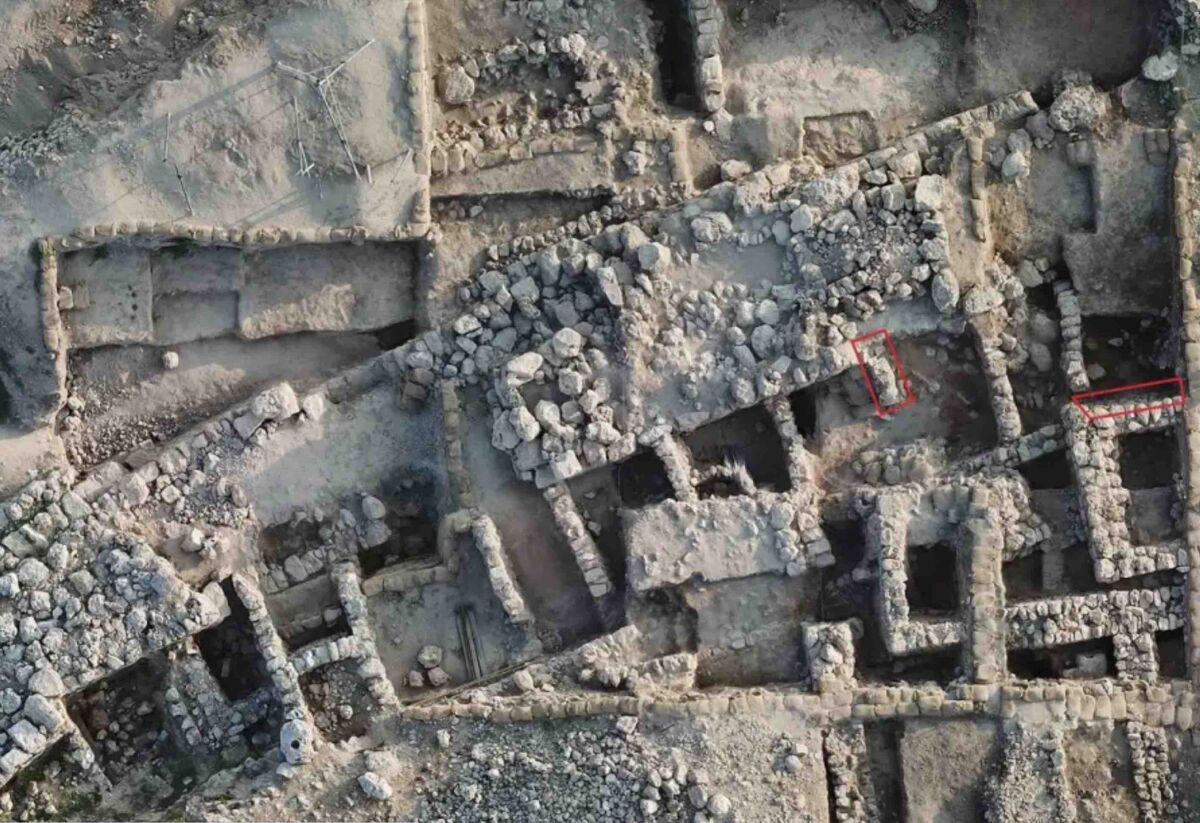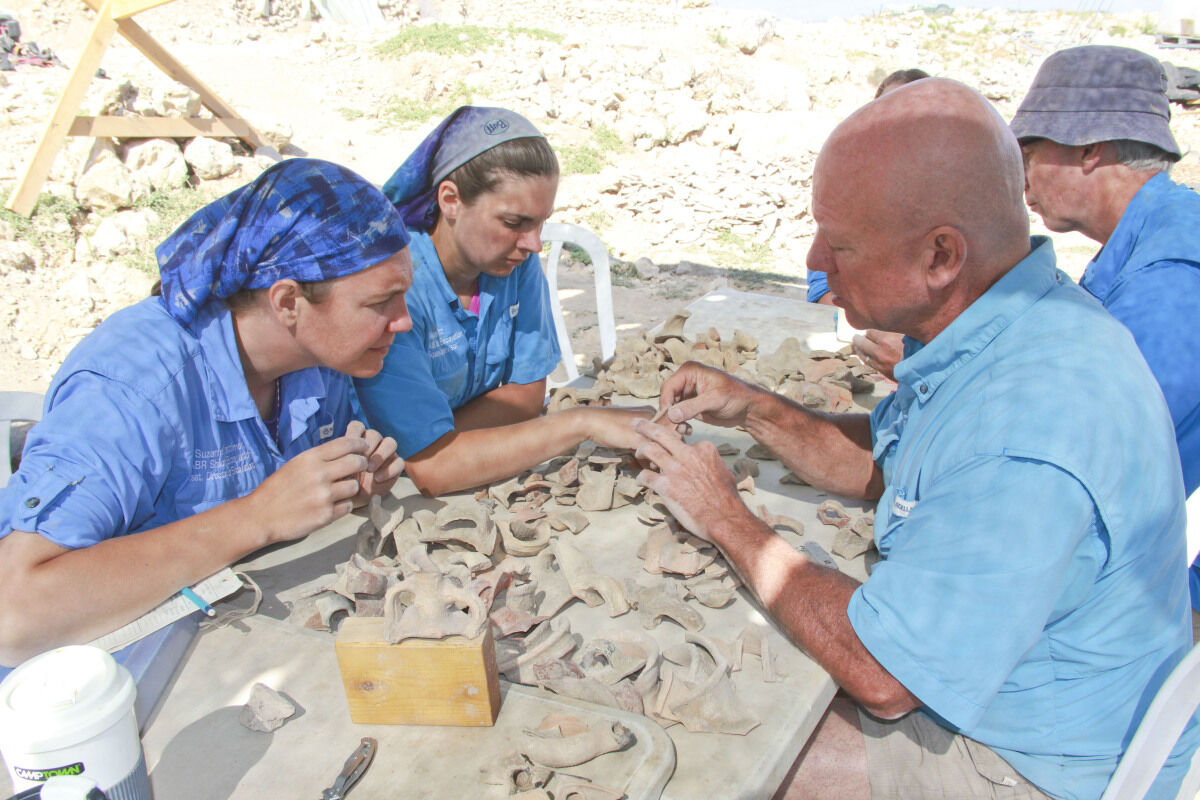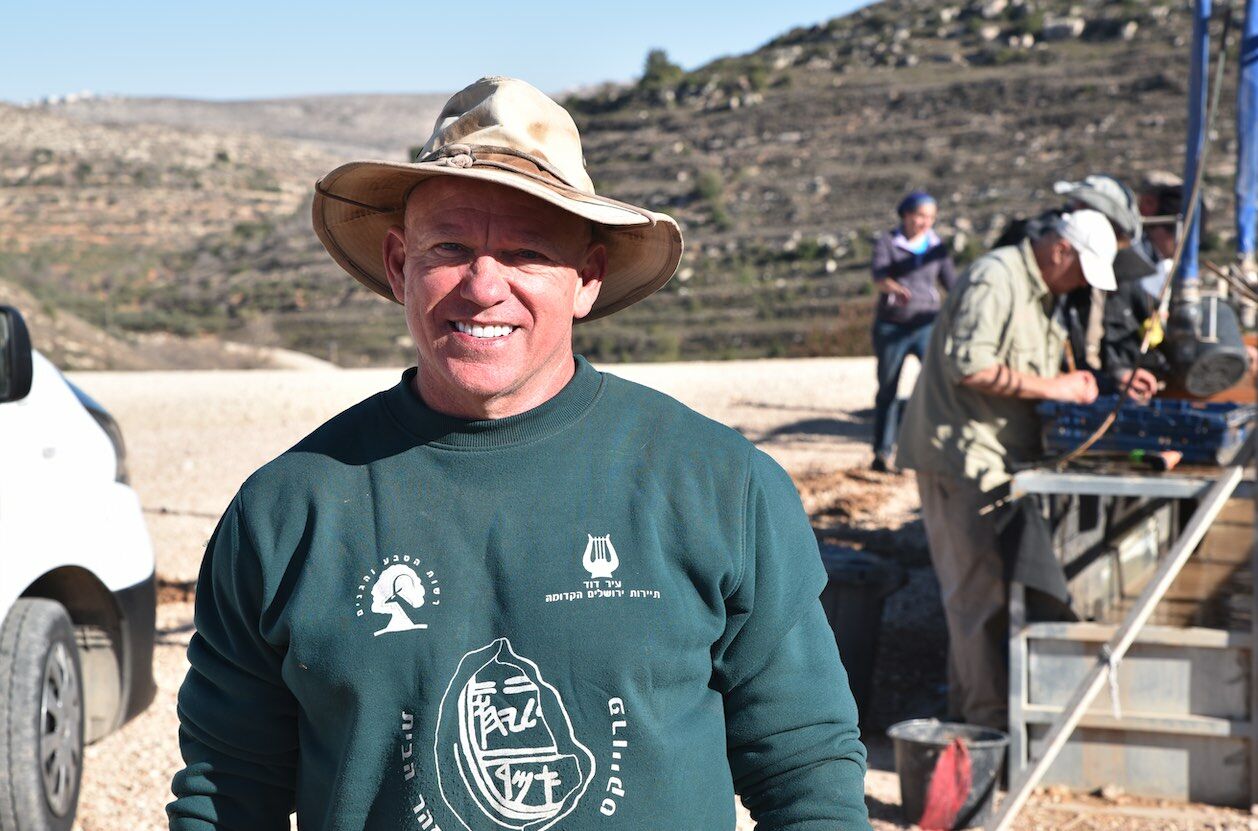Archaeologist Scott Stripling is the director of the Tel Shiloh excavations, conducted by the Associates for Biblical Research. Dr. Stripling and his team recently began excavations in Israel. In May, Dr. Stripling spoke with Brent Nagtegaal to discuss his important work in this biblically significant site and what they hope to find this season.
Brent Nagtegaal: Dr. Stripling, thanks for joining us. You are about to begin the next phase of excavations at one of the most important sites in Israel, Tel Shiloh. How long has it been since you last excavated this site?
Scott Stripling: Hi Brent, thanks. It’s a joy to excavate at Shiloh. We’ve been there since 2017, with a two-year hiatus because of covid. This will be our fourth season of excavation.
BN: Let’s begin with you giving us a quick summary of the biblical importance of Shiloh.
SS: Absolutely. Shiloh is first mentioned when Joshua erects the tabernacle there. We really don’t know much from the Bible before that point. We do, from archaeology, know that it goes back to about the Middle Bronze ii period; this is when the city was founded. We know, too, that it became a cultic site. Shiloh was Israel’s capital for the first 300 years or so. The ark of the covenant was there, so it’s always going to matter because of that. Later, Shiloh was destroyed because of their apostasy and wickedness. … The Shiloh connections always tie back to the presence of God and the tabernacle there.
BN: Can you explain what you mean by “cultic”? This term might sound a little odd to some people.
SS: It means religious, basically. When we talk about a group’s cult, we are talking about their religious practices. The word “culture” is based on cult. In other words, you form your values based on a religious system. So, by “cult” we’re just talking about religious practices.
BN: What specifically drew your attention to Shiloh? Was it a personal aspiration to excavate this site, or were you basically assigned the job?
SS: Surprisingly, it was both. Our research focus is definitely on the highlands of Israel, the period of the conquest. I’m interested in all periods in history and specifically all biblical periods. I’m fascinated with New Testament materials. I’ve excavated New Testament sites as well, but our primary focus is on the conquest. When it comes to archaeology, the highlands of Israel are in the sweet spot. Shiloh is another conquest site. After many years digging at Khirbet el-Maqatir [a contender for biblical Ai] and finishing there, we were able to segue right into a new dig. A sane individual would have taken two or three years off and published before launching into a new dig. I did not do that; so apparently I’m not very sane. But we had this fine, well-oiled machine that we got up and running [at Khirbet el-Maqatir], and I just couldn’t see shutting it down. The doors opened up for us to go to Shiloh. We were supported by the local community, and the Israel Antiquities Authority was also eager for us to do this, so it just kind of all came together, and it was a perfect fit.
BN: You mentioned “our.” Can you tell us about the organization behind the research expedition in Shiloh?
SS: Sure. Associates for Biblical Research has been working in the highlands of Israel for 43 years. This is the fourth site that we’ve excavated in the highlands, and then we’ve done work in other places as well. abr is a consortium of universities and individuals who are like-minded …. This summer, I have 15 universities and institutions that are working as part of our consortium all under my direction.
BN: And your teams are comprised of individuals from all over the world?
SS: You nailed it. We have participants from several Israeli universities, students as well. Some European, and then a lot of Americans.

BN: Let’s discuss the discoveries that relate to the first couple of seasons of excavation. And let’s just stick to the period in which the tabernacle was erected and later removed. What have you found in Shiloh that spotlights this period in history?
SS: Well, it’s a very fascinating period. We’re talking about the Late Bronze ii, Iron Age i kind of matrix, and maybe the beginning of Iron iia.
BN: Can you give some dates for these periods?
SS: If I’m taking an early date for the Exodus and synchronizing that with the Bible, we’re talking about something around 1400 b.c.e. for the tabernacle being erected at Shiloh, and it was destroyed around 1075 b.c.e.—something like that.
BN: Okay. And what picture is emerging from your first three seasons, and how does it relate to the Bible?
SS: Well, it’s exciting! Now for the first time after three seasons—and we’re publishing our three-year report right now—we have our first clear Late Bronze Age stratum. It’s a little frustrating when you’re dealing with Late Bronze Age material at sites because the ancient people often reused Middle Bronze structures. In the Middle Bronze Age, we have houses, walls and storage rooms. But in the Late Bronze Age, they mainly lived in tents, and then whatever structures were already in place, they continued to use those, maybe with minor repairs. So, it’s a little difficult, but we can now piece together that transition into the Late Bronze Age.
BN: But that’s to be expected, correct?
SS: Right. If we take the biblical text seriously, then yes, we would expect the Israelites to be living in houses that they didn’t build and occupying cities that they didn’t construct. And this is very consistent with what we have found.
BN: So we have evidence that the Israelites, when they first entered the Promised Land, did not dwell in homes they constructed. They did not destroy everything and rebuild; instead, they dwelt in the buildings the previous inhabitants occupied. And this is exactly what Moses said would happen, right?
SS: Yes. They continue to live in existing structures for some time and that is what we see. There is not a demographic explosion, if you will, in the archaeological record until about 1200. Which again, it takes several generations until you have that demographic explosion.
BN: And do you find evidence of construction at Shiloh around 1200 b.c.e., or are the Israelites still using the earlier buildings?
SS: No. They begin to build their own structures, coincidentally, when the possible platform for the tabernacle is constructed. That is the same time that we begin to see their own structures emerging, too.
BN: Can you briefly talk about the “cultic” evidence you have found at the site—the evidence that shows it was an Israelite site?
SS: Here are a few things. First, we have storage rooms that line the northern perimeter of the fortification walls. These are right next to the building that appears to be the platform of the tabernacle. So we have in close proximity to the tabernacle these storage rooms that line the interior. That is different from any site in Israel. This is unique in its construction and these rooms are full of Iron Age i collared-rim jars, which is typical of what you would expect of people bringing in tithes that need to be stored.

We also have a building which orients east-west, which appears to match identically the dimensions given in the Bible for the tabernacle. Around this building, we have a demolished four-horned altar. We also have identified two ceramic pomegranates.
BN: Tell us more about this demolished altar. How do you know it was four-horned altar? Did you find the altar intact?
SS: Immediately outside the building we have a beautifully preserved altar horn, and we have another one that is in secondary usage as part of later-period wall. And there is a destruction matrix right in there that we carbon-dated and ceramically analyzed to 1075 b.c.e., which matches perfectly with the Philistine destruction of Shiloh alluded to in the Bible (but not specifically referenced).
Then, maybe most importantly, immediately to the east of that building if you walked 30 seconds or so, you would reach the eastern perimeter wall. On top of this wall, and immediately inside and on the outside, there was a favisa [a sacred deposit] consisting of pottery and bones. Only bones from the biblical sacrificial system exist there, along with very datable Late Bronze Age pottery from the lbib–lbiia horizon, so around 1400–1300 b.c.e.—matching, say, the Beth-Shean assemblage very closely. Two thirds of the bones are from the right side of the animal; one third are from the left side of the animal.

All this evidence is a clear indication, if one is a Bible reader and reads Leviticus 7, that you’re dealing here with verisimilitude. The Bible says that the right side of the animal is the priest’s portion. Give me another explanation for that, and I would love to hear it! So, when we take these things inductively, if you will—the bone deposit, the favisa, the structure that matches the dimensions of the tabernacle, the storage rooms, the demolished altar, the pomegranates—I think we’re getting a synchronism and a clear picture of what was happening at Shiloh during the period of the tabernacle, the period of Eli and Samuel.
BN: When I interviewed you a couple of years ago, you had an idea that there was a roaming location for the tabernacle itself. Do you now believe the evidence is pointing to a more stationary structure?
SS: I do. Let it not be said that I’m unwilling to change my mind. You hypothesize when you start an excavation, and my hypothesis was that perhaps the tabernacle was mobile—that the whole site was sacred and maybe it moved from different locations. … The summit also made good sense to me. That’s what the Danish team thought, and that’s what the Bar Ilan University team thought as well. So I, of all people, was the most surprised when on the northern slope in Area H1, we uncovered this building. That caught me by total surprise.
BN: So, the building itself was not previously uncovered?
SS: No it wasn’t. Only one section of the wall in Area K was uncovered by the Bar-Ilan team in the 1980s, which [they] had dated incorrectly to the Middle Bronze Age. This was not what I expected, but as the evidence unfolded, I had to say apparently my previous theory [that the tabernacle was mobile or on the summit] was just that, a theory. We now have a better candidate.
BN: When I tell people that you’re excavating at Shiloh, they often ask, “Does he expect to find the tabernacle?” I usually tell them that the tabernacle was made from animal skins, so it’s probably long decayed, which means we’re unlikely to find it. But you believe you now have evidence of the tabernacle site. Tell me a little about this platform and how it relates to the tabernacle. Is this in bedrock, or are there built walls attached to it, or is this one of the goals of the next season of excavation to try and discern more of this?
SS: Yes, yes, yes and yes. We have three corners of the building. This summer, we should know very early on if we have the fourth corner where we think it is, and then I can speak with more confidence about what this probably is. The Bible in 1 Samuel 3 gives some hints in the language. In the first part of the chapter, the language used implies the tabernacle was temporary. It has curtains and things like that. By the end of the chapter, the language implies the tabernacle was more stationary. It now has walls and a door.
BN: Please tell us more about the biblical story attached to 1 Samuel 3.
SS: Sure, well that’s where Samuel is growing from a small child and he’s hearing the voice of God. This chapter talks about the ark and Phinehas and Hophni, the wicked sons of Eli, and how the ark was taken to the battle and then captured by the Philistines. All of this is happening in chapter 3. When the tabernacle is referred to in this chapter, the language early in the chapter suggests it was temporary. But, by the end of the chapter, the language indicates it was more permanent. It has walls and a door. This is more obvious in the Hebrew, but you can pick it up in English. When you read about it in the Mishnaic literature, the language suggests there was a temporary then semi-permanent structure built at Shiloh for the tabernacle. Maybe it was a platform with stub walls and a tent over it—so a quasi-Mishkan/temple.
BN: This tabernacle platform didn’t last long. It was built shortly before Shiloh was destroyed, right?
SS: That’s right. But even though it was destroyed, Shiloh remains a special place. Later you have a prophet there that people go to see at Shiloh. Then there are references to Shiloh even in the time of Jeremiah. But it is more reminiscing—it’s not the central cultic center.

BN: Let’s conclude by talking a little about the next season. What questions are you hoping to answer?
SS: Sure. We’re trying to clarify the transition from the Canaanite period to the Israelite period, from mbiii into the lbib–lbiia horizon. We’re also trying to understand the extent to which the site was occupied in the late Second Temple Period, which by the way is extensive. Across the entire site, we have evidence of a large settlement during the time of Jesus. We have Byzantine remains, Islamic material, Late Roman material as well, a little bit of Persian, a little bit of Iron Age ii. We’ve got a clear stratigraphy now, but our research focus is the transition between the Bronze age and the Iron age.
BN: How many areas are you excavating across the site, or are you focusing mainly on the tabernacle area?
SS: We are primarily in Area H1, which is a large area, and fortuitously, that’s where the building emerged, right in the center of H1. We will extend a little bit into Area K, which is right across the path from us, so that we can explore the rest of the building. Then perhaps we’ll be able to explore Area D as well where we have the favisa and the bone deposit.
BN: If you find something blockbuster, how long do you expect it would take for it to reach publication?
SS: I’m pretty disciplined and focused on this. … Publication is always our goal. It is not to excavate; it is to publish. It will be on a fast track, and it will be my top priority to get it published and get the word out.
BN: Okay, well, all the best on your travels. I hope to visit you at the site here in the next month. Thank you very much for affording us your time today. We really appreciate you talking with us.
SS: Happy to do it, Brent. I’m going to have a trowel and some gloves ready for you when you arrive.
